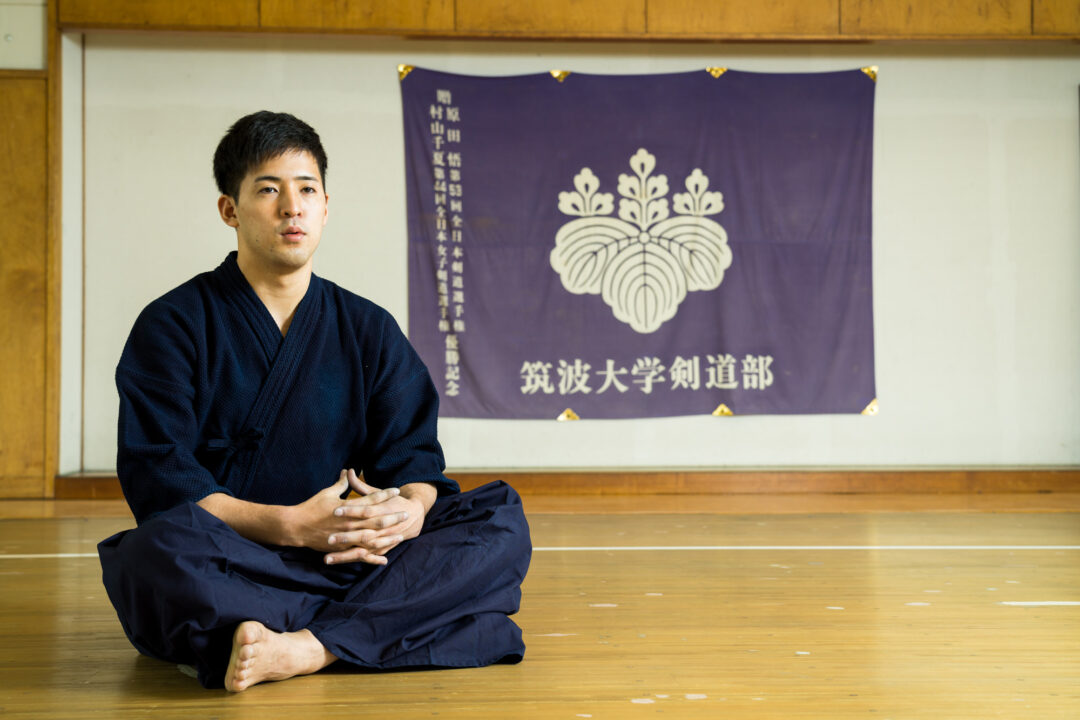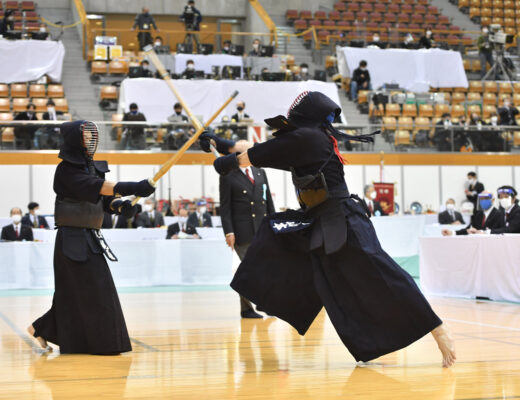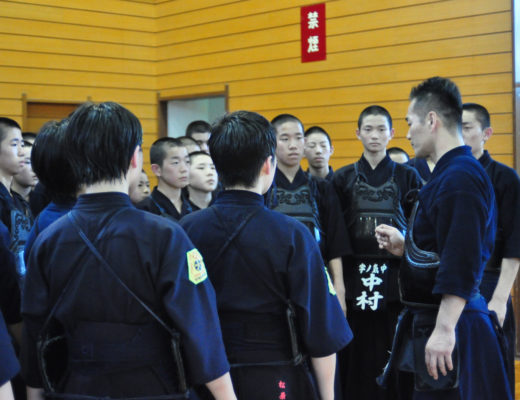2021.6 KENDOJIDAI
Kenshiro Matsuzaki won the 68th All Japan Championship.
It was his first title after overcoming defeat in the previous final.
“I’ve done what I had to do up until now”.
He fought by putting his entire Kendo life on the line that day.
Matsuzaki Kenshiro, 4th Dan
Born in 1998 in Isahaya City, Nagasaki Prefecture, 22 years old. He advanced from Shimabara High School to Tsukuba University, and next spring he will enter the graduate school of Tsukuba University. He has placed second in the Inter-High School Team Championship and third in the individuals, has won the National Athletic Meet three times, and has placed second in the team and second in the individual competition at the All Japan Student Championship. He has participated in the All Japan Championships three times in a row since his second year at university, finishing in the top 16 the year before last, second place last year, and taking the title for the first time this year.
Calm and collected, focus on the Shiai at hand
Winning a fierce battle
He was in his second year of university when he competed in the All Japan Championships for the first time.
Just before he entered the tournament, the public may have thought he was just another student with a bright future. He was defeated in the third round by Maeda Yasuki from Osaka, but he went toe-to-toe with some of Japan’s leading young competitors. This was the event that made the name of Matsuzaki Kenshiro widely known. In the last tournament, he defeated candidates for the title one after another to advance to the final. With unpretentious techniques in his arsenal, he was barely out of reach for the title.
This was his third All Japan championship, and he must have had a strong desire to win it.
“I’ve been working hard all year to win this championship. On the day of the tournament, I was surprisingly calm and focused on each and every match”.
In fact, he said that his kendo was not in good condition that day. In the first round, there was a close call when Taka Yuji (Osaka) scored first.
“My body movement was not sharp and I made a wrong decision there. But to my own surprise, I felt calm and was able to move calmly even after he took an Ippon off me.
Even immediately after losing the Ippon, he was completely calm. Matsuzaki’s response immediately after the Shiai resumed was astounding. He came forward with Tame and his Kensaki low, and when Taka saw an opportunity and jumped for Men, he deflected the blow with the Omote (right) side of the Shinai and landeda Kaeshi-do. When he landed that undisputable Ippon and regained his composure, he landed a Debana-men by drawing out his opponent in the third exchange.
It was an impressive performance.
“Rather than worrying about how I was doing, I was able to go into the Shiai with the mindset that I had done everything I needed to do”.
In the semifinals, she faced Hoshiko (Kagoshima), a classmate of his in Tsukuba University. The two, who represent the generation born in 1998, have fought on the big stage many times before. For Matsuzaki, who is aiming to become the best in Japan and the world, the match against Hoshiko was an important one.
“It was a tough match where a moment’s hesitation would certainly result in the opponent landing a strike”.
As the back-and-forth battle continued, things took a turn at the end of the Shiai. As Hoshiko cut Kote, Matsuzaki overtook his attempt with a Men strike. Three flags. There were only 20 seconds left in the match.
“By winning against Hoshiko I couldn’t allow myself to lose, and my desire to win the final became even stronger”.
This was his second final in a row. His opponent was Murakami Raita (Osaka), a Senpai of his from Tsukuba University.
“He was very intimidating, but I didn’t let that stop me from creating my own spacing and concentrating on executing my techniques”.
Matsuzaki took the lead in the midgame. He drew Murakami out by initiating and overtook his advance with a Men strike. When the Shiai resumed, Murakami attempted to even the score. Matsuzaki drew him in yet again and scored a Kote to finish the score. He became the third student to win the title, following Kawazoe Tetsuo and Takenouchi Yuya, achieving redemption of last year’s defeat.
“I was able to let my body perform my techniques naturally. After the match, I found myself surprisingly calm, and I think I was a little happy, but in my mind I was thinking of things to reflect on and issues to work on, and I couldn’t relax. I felt strangely different this time, more confident than before. Perhaps my desire to not regret what I had worked on led me to focus”.
Awareness of what he had learned from that battle
led to studying the issue more deeply.
In 2020 the Kendo Club at Tsukuba University where Matsuzaki attends also got restricted in their Keiko.
No more world championships, no more All Japan Kendo Federation training camps to select competitors. It was difficult for Matsuzaki to even maintain his motivation, but he did what he could such as Suburi to keep himself motivated.
“For this year’s All Japan Championship, I think I’ve become more aware of what to work on because of last year. I also focused with more purpose on Kote techniques alongside Men techniques. That may have been a contributing factor”.
In the past year, he has started to study more deeply what he has learned at the University of Tsukuba, the All-Japan Championships, and the World Championships training camps. One of the best examples of the results of his research is the Kote technique he showed in the final Shiai this time. He drew his opponent in, created his striking Maai, and executed Kote. Matsuzaki must have felt that he had grown by landing it.
“Regardless of whether it was going to be an Ippon or not, the fact that I was able to create a situation in which I could perform it gave me confidence”.
With no Shiai or Shiai Keiko available, this is where he realized the results of his efforts.
“In that sense, this championship was an opportunity for me to test what I have been working on. I feel that I could secure my striking opportunities better and my repertoire of techniques had grown”.
Although he was not able to participate in club activities throughout the year, he improved himself through Suburi, physical education classes at school, and independent Keiko with a few other club members”.
“I was very grateful to have an environment that allowed me to practice under such circumstances. I am very grateful to the university and the teachers for their understanding.
Never let skill difference discourage you
Where there is a will, there is a way
How did he win the All Japan Championships? When asked that question, Matsuzaki thought deeply before giving the answer as to what made him improve his level.
The rest of this article is only available for Kendo Jidai International subscribers!





